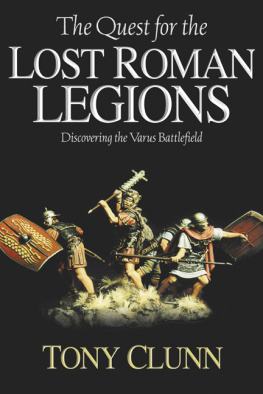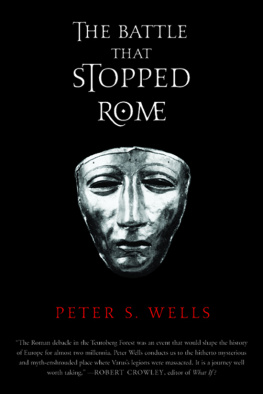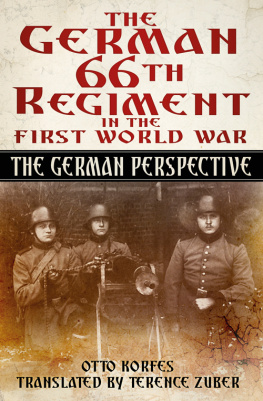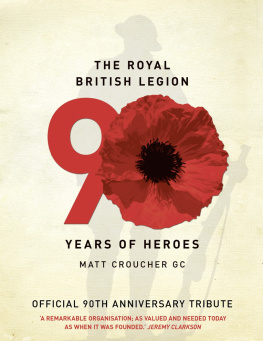

2005, 2009 by Tony Clunn
All rights reserved. No part of this publication may be reproduced, stored in a retrieval system, or transmitted, in any form or by any means, electronic, mechanical, photocopying, recording, or otherwise, without the prior written permission of the publisher. Printed in the United States of America.
Cataloging-in-Publication Data is available from the Library of Congress.
Originally published in a private edition in 1999 by Arminius Press
First Savas Beatie edition published in 2005. This printing: 2009
978-1-932714-08-1 (cloth)
978-1-932714-70-8 (trade paper)
eISBN: 978-1-61121-008-8

Published by
Savas Beatie LLC
521 Fifth Avenue, Suite 1700
New York, NY 10175
Phone: 610-853-9131
Editorial Offices:
Savas Beatie LLC
P.O. Box 4527
El Dorado Hills, CA 95762
Phone: 916-941-6896
(E-mail) editorial@savasbeatie.com
Savas Beatie titles are available at special discounts for bulk purchases in the United States by corporations, institutions, and other organizations. For more details, please contact Special Sales, P.O. Box 4527, El Dorado Hills, CA 95762, or you may e-mail us at sales@savasbeatie.com, or visit our website at www.savasbeatie.com for additional information.
This book is dedicated to the people of Kalkriese for the peace and tranquility of their homes, for their friendship, and for their invaluable assistance over the years.
To my dear friend and colleague
Professor Dr Wolfgang Schluter
To good friends
Paul and Ursula, Bissendorf,
Karl and Maria, Berlin,
Willy Drger, Hannover,
Denny Warta, USA,
Wolfgang Prauss, Berlin.
Ron & Margaret, UK
And to Sean, Tanya, and Erika
Also in special memory of Gisela, who walked over the
Kalkriese fields so many times and who passed away
to greener fields in February 1997.
With much love to Anna and our children,
Jana, Mark Anthony, and Josephine Louise.

The Mask. Originally covered in silver, this iron face was part of a soldiers helmet. It was excavated from the central battlefield at Kalkriese.
Photo courtesy of the author
Contents
Maps and Photographs
Preface
In addition to many other sources, this book is primarily based upon the records and diaries I kept of nine years of involvement with the archaeological excavations in Kalkriese, near Osnabrck, in Germany. It was there, in 9 AD, that three Roman legions (the Seventeenth, Eighteenth and Nineteenth) under command of Quinctilius Varus, Consul of Rome, and Governor of the province of Germania, some twenty thousand men in all, were slaughtered in a running battle by German tribesmen under the command of Arminius. The stunning defeat was one of the most important military engagements in Western civilizations history, though where it took place remained a mystery for almost 2,000 years.
My good friend and Osnabrck archaeologist, Professor Wolfgang Schluter, and I spent many years searching for the truth about the disappearance of the Varus legions in the highlands of the Teutoburger Wald, and the bloody battle that finally destroyed them at Kalkriese. The records kept throughout allowed me to provide an accurate account of the long, exhilaring, and often frustrating journey to document where Varus and his men met their end. This modern-day archaeological detective story comprises one of the two primary storylines in The Quest for the Lost Roman Legions.
In order to more fully and completely appreciate and come to grips with what happened in 9 AD, I decided to include a parallel story based upon my understanding of Rome and its army, the terrain of northern Germany, and artifacts uncovered during my quest for the battlefield and the truth of Varus demise. What was happening inside the Roman column during the march toward the Rhine? What was it like to be a member of a Roman legion stationed in Germany during the reign of Augustus? How did Arminius plan and execute one of the most devastating ambushes in military history? How did the Romans react when they realized they were under attack and how did the battle unfold from that point to the final bloody confrontation? Although this portion of the book is historical fiction, it is firmly grounded on accepted historical sources, among them Tacitus, Cassius Dio, and Florus, archaeological evidence, and a firm grasp of the topography in this portion of Germany. Of course, we will never know exactly what was said and who did what, but I believe the liberties taken help provide readers with a richer understanding of what these people were experiencing as the book alternates between the 20th Century and the time of Augustus. For example, we know a Roman solder named Marcus Aius was present with Varus and killed in the bloody melee, because a bronze clasp bearing his name has been unearthed. Although his exact rank is unknown, I elevated Aius to Senior Tribune and Second-in-Command of the legions under Varus, and use him in a historically accurate sense to convey to readers the responsibilities and actions expected from an officer of such high rank. Virtually everyone elseVarus, Arminius, Segestes, his daughter Thusnelda, and many othersactually lived and died during this early period of Germanys history.
The Varusschlacht (Varus Battle) spun history, and thus Western civilization, in a different direction. The Quest for the Lost Roman Legions is not the final word on that watershed event. Out in the fields, there is much more waiting to be discovered.
Acknowledgements
I would like to thank all those who have helped me in the writing of this book, those who have encouraged me, and those who have become friends and colleagues.
For editing the original diaries: Greg Payne, Treasure Hunting Monthly, and my daughter Tanya.
For professional advice and guidance: Professor Dr. Wolfgang Schluter, Osnabrck; Professor Dr. Siegmar von Schnurbein, Frankfurt; Professor Mller, Hamburg; Dr. Frank Berger, formerly of Hannover and now Frankfurt; Dr. Susanne Wilbers-Rost, Osnabrck; Dr. Gebers, Denkmalpflege Hannover; Dr. Johann-Sebastian Kuhlborn, Munster; Dr. Erhard Cosack, Hannover; Dr. Joachim Harnecker, Osnabrck; Dr. Georgia Franzius, Osnabrck; Dr. Achim Rost, Osnabrck; Dr. Hermann Queckenstedt, formerly Landschaftsverband Osnabrck; Lt-Col. Ken Martin, Royal Army Medical Corps.
For friendship and assistance in Kalkriese: Herr Christian Jaletske, (Director Museum and Park Kalkriese); Dr. Heidrun Derks, (Curator and Manager Kalkriese Museum); Dr. Sabine During, Frau Gisela Soeger, Katharina von Kurzynski, MA; Herr Baron and Christoph von Bar; Frau Fisse-Niewedde; Herr and Frau Sommerfruchte; Herr and Frau Meyer Holtkamp and family; Herr and Frau Droge; Herr Sonderman; Herr and Frau Wilfried Fisse; Herr and Frau Wischmeyer; Herr Dusterberg; Herr Finke; Herr Eberhard Niewedde; Frau Barbara Bigalke; Herr Jurgen Conze; Herr Schumacher; Herr Macke; Herr Eggemann; Herr Brunning; Herr Mgge; Klaus Fehrs; and the late Gisela Hornung.
I would also like that thank Landrat Manfred Hugo, President of the Landshaftsverband Osnabrck; Herr Heinz-Eberhard Holl, Oberkreis- director Osnabrck; Kreisrat Dr. Joseph Rottman, Geschaftsfuhrer Osnabrck; The Burgermeisters of Bramsche and Kalkriese; Herr Wilhelm Held and Herr Peter Wilmering, Schwagstorf; Herr Mathias Brorman, Felsenfeld;
















